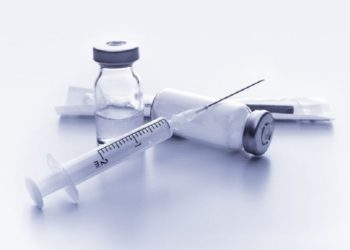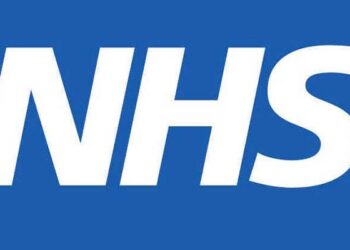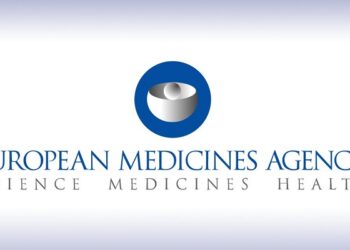Teva Pharmaceutical Industries Ltd announced it has obtained approval from the European Commission for an indication extension of Trisenox® (arsenic trioxide).
This marks an important advancement in treatment for Acute Promyelocytic Leukemia (APL) patients in Europe, as it is the first time that a form of acute leukemia can be effectively treated with a regimen that is entirely chemotherapy-free. APL is a rare and aggressive type of acute leukemia that can kill within hours or days if left untreated2. Trisenox®, in combination with retinoic acid, has shown a 99% overall survival rate with almost no relapses after more than four years (50 months) of median follow-up1.
“Teva is committed to providing wider access to high-quality medicines to ensure more people can benefit from the treatments they need. We’re very pleased by this decision of the European Commission, and we look forward to offering a chemotherapy-free treatment option for all newly diagnosed APL patients,” said Rob Koremans, MD, President & CEO, Teva Global Specialty Medicines.
The decision by the European Commission, which follows a positive recommendation from the Committee for Medicinal Products for Human Use (CHMP) of the European Medicines Agency (EMA) on October 13, grants marketing authorization for first line use of Trisenox® in the 28 countries of the European Union. The indication extension is for newly diagnosed low to intermediate risk Acute Promyelocytic Leukemia (APL) in combination with retinoic acid. Today’s announcement points to a recognition by the European Commission that treating low to intermediate risk APL with a chemo-free regimen of Trisenox® plus retinoic acid can increase survival rates, dramatically reduce the risk of relapse, and help avoid chemotherapy-related side effects, such as the risk of life-threatening infections.
Welcoming the approval, Francesco Lo-Coco, Professor of Haematology and Head of the Laboratory of Integrated Diagnosis of Oncohematologic Diseases, Department of Biomedicine and Prevention, University of Rome Tor Vergata, Italy said, “This approval by the European Commission is good news for APL patients as we now have access to a cure for an acute leukemia without using chemotherapy. Moreover, this decision is a very positive endorsement by the European Commission, as it was made based solely on published academic research and studies. From now on, APL patients with non-high risk disease will have access to this chemotherapy-free regimen of Trisenox® plus retinoic acid at diagnosis, which has the potential to increase survival rates while minimizing side effects associated with chemotherapy.”
In Europe, approximately 1,500 to 2,000 people are diagnosed with APL each year3. APL, a life-threatening form of leukemia, can cause uncontrollable bleeding leading rapidly to death if left untreated2. The rapid progression of APL leading to early mortality is a substantial problem, affecting up to 30% of patients4. Rapid diagnosis and commencement of treatment is essential to avoid early mortality2,5.
About Trisenox®
On 5 March 2002, the European Commission granted approval for the Marketing Authorization Application (MAA) for Trisenox®. The authorization, which was valid throughout the European Union (EU), was granted to treat patients with relapsed or refractory acute promyelocytic leukemia (APL) and characterized by the presence of the t(15;17) translocation and/or the presence of the Pro-Myelocytic Leukaemia/Retinoic-Acid-Receptoralpha (PML/(RARα) gene. Trisenox®, a targeted drug, degrades the PML- RARα fusion protein. Trisenox® received marketing authorization in 2000 by the U.S. Food and Drug Administration.
The marketing approval for Trisenox® was granted based on results from a multicenter study in which 40 relapsed APL patients were treated with Trisenox® 0.15 mg/kg until bone marrow remission or a maximum of 60 days. Thirty-four patients (85 percent) achieved complete remission after two cycles. When the results for these 40 patients were combined with those for the 12 patients in a pilot trial, an overall response rate of 87 percent was observed11.
1mL of Trisenox® contains 1mg of arsenic trioxide. Trisenox® is a concentrate for solution for infusion. It is a sterile, clear, colorless, aqueous solution. Trisenox® must be administered under the supervision of a physician who is experienced in the management of acute leukaemias, and special monitoring procedures must be followed.
References:
1. Journal of Clinical Oncology, July 11, 2016 as 10.1200/JCO.2016.67.1982.Improved Outcomes With Retinoic Acid and Arsenic Trioxide Compared With Retinoic Acid and Chemotherapy in Non–High-Risk Acute Promyelocytic Leukemia: Final Results of the Randomized Italian-German APL0406 Trial. Professor Uwe Platzbecker et al. http://jco.ascopubs.org/cgi/doi/10.1200/JCO.2016.67.1982
2. Coombs CC, et al. Blood Cancer J. 2015;5,e304.
3. Sant M, Allemani C, Tereanu C, De Angelis R, Capocaccia R, Visser O, et al. Incidence of hematologic malignancies in Europe by morphologic subtype: results of the HAEMACARE project. Blood 2010;116(19):3724-34.
4. Lehmann S, Ravn A, Carlsson L, et al. Continuing high early death rate in acute promyelocytic leukemia: a population based report from the Swedish Adult Acute Leukemia Registry. Leukemia 2011;25:1128–34
5. Lo-Coco F. Blood. 2011;118:1188-9
6. Cicconi L, Lo-Coco F. Ann Oncol. 2016;27:1847-81
7. De la Serna J, et al. Blood. 2008;111:3395-402
8. Howlader N, Noone AM, Krapcho M, et al, eds. SEER Cancer Statistics Review, 1975-2012, National Cancer Institute. Bethesda, MD. http://seer.cancer.gov/csr/1975_2012/, based on November 2014 SEER data submission, posted to the SEER web site, April 2015. Accessed June 8, 2016.
9. Lo-Coco F, Cicconi L, Breccia M. Current standard treatment of adult acute promyelocytic leukaemia. Br J Haematol. 2015. doi.10.1111.bjh.13890.
10. National Cancer Institute SEER Stat Factsheet Acute Promyelocytic Leukemia http://seer.cancer.gov/statfacts/html/amyl.html accessed 16 Nov 2016
11. Soignet SL, et al. J Clin Oncol. 2001;19:3852-3860.
About Teva
Teva Pharmaceutical Industries Ltd. (NYSE and TASE: TEVA) is a leading global pharmaceutical company that delivers high-quality, patient-centric healthcare solutions used by millions of patients every day. Headquartered in Israel, Teva is the world’s largest generic medicines producer, leveraging its portfolio of more than 1,800 molecules to produce a wide range of generic products in nearly every therapeutic area. In specialty medicines, Teva has a world-leading position in innovative treatments for disorders of the central nervous system, including pain, as well as a strong portfolio of respiratory products. Teva integrates its generics and specialty capabilities in its global research and development division to create new ways of addressing unmet patient needs by combining drug development capabilities with devices, services and technologies. Teva’s net revenues in 2015 were $19.7 billion. For more information, visit www.tevapharm.com

















